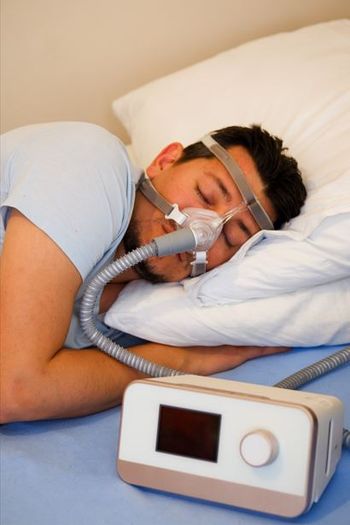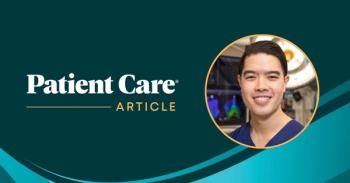
TIA-to-Stroke Risk Prediction Easy As A-B-C-D2
SAN FRANCISCO -- A new prognostic tool called ABCD2 for predicting the early risk of a major stroke after a transient ischemic attack (TIA) may help physicians determine which patients need emergency care, researchers said.
SAN FRANCISCO, Jan. 26 -- A new prognostic tool called ABCD2 for predicting the early risk of stroke after transient ischemic attack (TIA) may help physicians determine which patients need emergency care, according to researchers here.
The ABCD2 scoring system tended to predict short-term stroke risk better than the two existing longer-term risk prediction scales, reported S. Claiborne Johnston, M.D., of the University of California San Francisco, and colleagues, in the Jan. 27 issue of The Lancet.
The ABCD2 score is based on age, blood pressure, clinical features, diabetes, and TIA duration. It predicts stroke risk during the two-day window during which half of subsequent strokes occur, the researchers said.
Although the study validated the utility of both the existing California and ABCD scales, the new tool is likely to be more useful for emergency management and creates a single standard for use in clinical care and public education, Dr. Johnston and colleagues said.
"Identifying those at highest and lowest risk of stroke in the first days and weeks after a TIA would allow more appropriate utilization of costly secondary prevention strategies, including hospitalization," they wrote.
"The California Score was developed to predict stroke within 90 days and the ABCD score predicts seven-day stroke risk, whereas the two-day stroke risk is often most relevant for decisions about necessity of emergent evaluation and observation," they added.
To derive the ABCD2 scale, the researchers used the two patient cohorts from which the original California and ABCD scores were derived. They also looked at four separate cohorts of patients from Northern California and Oxfordshire, England, to validate the original and new prognostic scales.
These 4,809 patients overall were diagnosed with TIA in emergency departments, specialist clinics, or primary care offices typically within one day of symptom onset. Patient characteristics were generally similar between cohorts, though those from California were more likely to have non-white race, diabetes, and prolonged TIA and less likely to have atrial fibrillation compared with the English cohorts.
TIA was diagnosed on the opinion of the initial treating physician, and timing of events during follow-up was measured as time of presentation rather than symptom onset, to reflect how the scores would be used in practice. Stroke diagnosis was confirmed by a study neurologist, based on review of medical and electronic records, in the California cohorts and by face-to-face evaluation and review of records in the English cohorts.
Among the patients overall, the stroke rates were:
- 3.9% at two days after presentation (189 patients),
- 5.5% at seven days (267 patients),
- 7.5% at 30 days (360 patients), and
- 9.2% within 90 days (442 patients).
The researchers found the most sensitive and specific predictors of two-day stroke risk were five factors. Adding together points for these factors comprised their unified ABCD2 score. Point allocations were:
- One point for age 60 or older,
- One point for blood pressure at or above 140 mmHg systolic or 90 mmHg diastolic,
- Two points for unilateral weakness,
- One point for speech impairment without weakness,
- Two points for TIA duration of 60 minutes or more,
- One point for TIA duration 10 to 59 minutes, and
- One point for diabetes.
Under this scoring system, 21% of patients would be classified as high risk (six to seven points, 8.1% two-day risk), 45% moderate risk (four to five points, 4.1% two-day risk), and 34% low risk (zero to three points, 1.0% two-day risk).
Compared to both existing prediction scales, the ABCD2 score was generally the best predictor of two-, seven- and 90-day risk of stroke as measured by c statistics (1.00 is ideal sensitivity and specificity, 0.50 is no better than chance). However, 95% confidence intervals overlapped.
For two-day stroke risk, the c statistics ranges across cohorts were:
- 0.60 to 0.75 for the California score,
- 0.64 to 0.76 for the ABCD score, and
- 0.66 to 0.79 for the ABCD2 score.
For seven-day stroke risk, the c statistic ranges across cohorts were:
- 0.60 to 0.79 for the California score,
- 0.64 to 0.81 for the ABCD score, and
- 0.63 to 0.83 for the ABCD2 score.
For 90-day stroke risk, the c statistic ranges were:
- 0.61 to 0.73 for the California score,
- 0.63 to 0.77 for the ABCD score, and
- 0.64 to 0.75 for the ABCD2 score.
The researchers concluded, "Existing prognostic scores for stroke risk after TIA validate well on multiple independent cohorts, but the unified ABCD2 score is likely to be most predictive."
An admission policy for hospitalization of all ABCD2 high-risk patients would have resulted in 52% of strokes occurring among unadmitted patients. A policy dictating admission for all those with moderate or high risk would have resulted in only 9% of strokes occurring among those not admitted.
"Based on results of a prior cost-utility analysis, an ABCD2 score of four or greater may justify 24-hour hospitalization in the U.S. solely on the basis of a greater opportunity to administer thrombolysis early if a subsequent stroke occurs in the hospital as opposed to at home," they wrote.
The score predicted risk similarly among African American, Asian American, Hispanic and white patients. It was likewise as good a predictor among patients with a confirmed diagnosis as among those not thought to have had a TIA after review by a neurologist.
However, "since the score may work in part because it identifies true TIAs, it should not supersede expert neurological judgment," Dr. Johnston and colleagues wrote.
In an accompanying comment, Walter N Kernan, M.D., of Yale characterized ABCD2 as "currently the best available method" for evaluating short-term stroke risk after a TIA."
Newsletter
Enhance your clinical practice with the Patient Care newsletter, offering the latest evidence-based guidelines, diagnostic insights, and treatment strategies for primary care physicians.



















































































































































































































































































